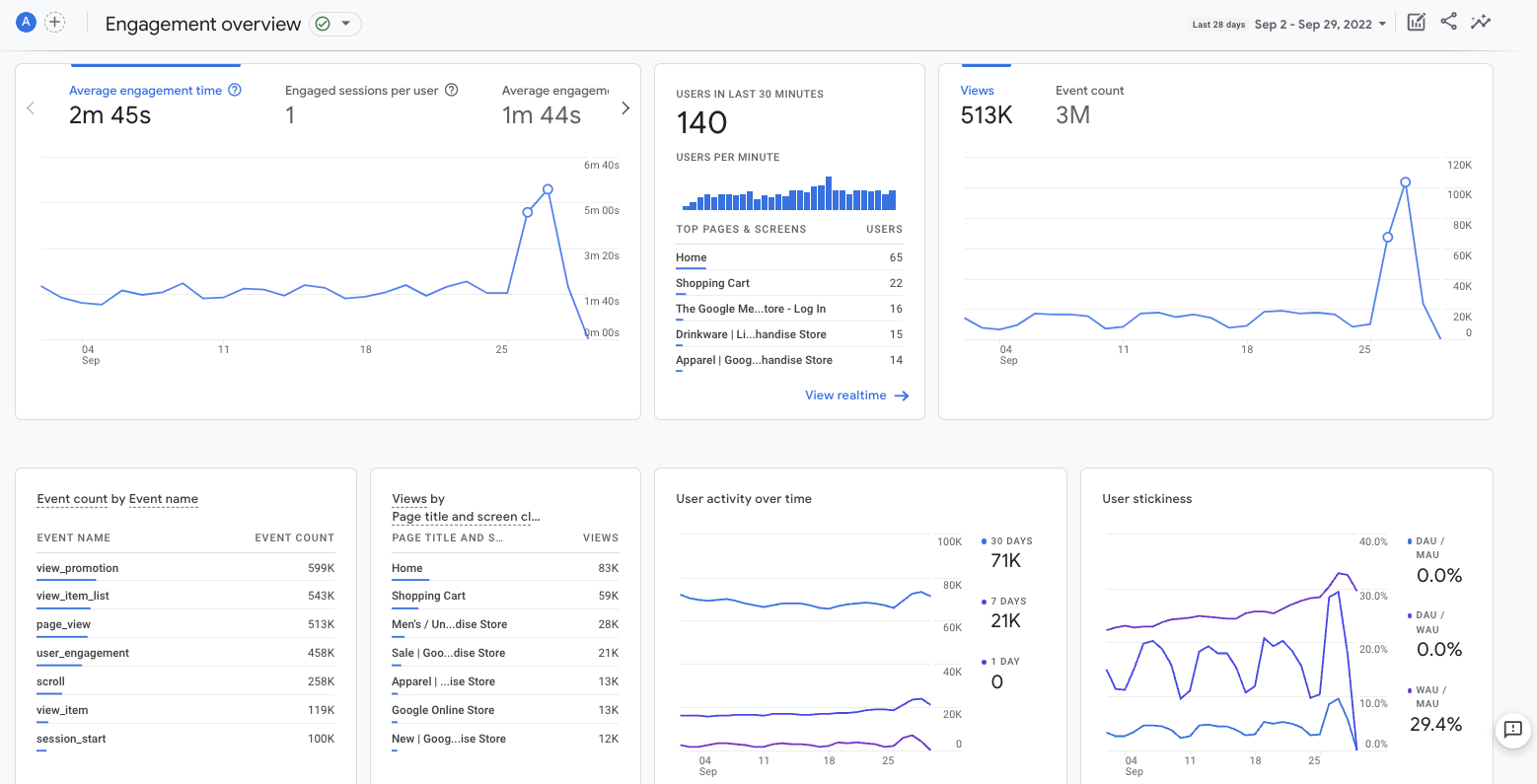Why you should switch to Google Analytics 4 right now
Stop me if you’ve heard this before, but the world of digital marketing is going through a major change.
Cookie blockers and heightened privacy regulations mean we can no longer rely on cookies for tracking user behavior on our apps and websites. It’s the reason you might have noticed an increase in opt-in pop ups when you first visit a website.
These changes are good for user privacy but are bad for data analysis. Enter Google Analytics 4 (GA4), a new way of doing things.
What is GA4?
GA4 is not an update to Google Analytics; it’s a whole new system. The old way (Universal Analytics) was built on sessions or pageviews, while GA4 is all about events. Events can essentially be anything. Pageviews, clicks, page scrolling, form submissions or whatever custom event your heart desires. To put it simply, GA4 tracks all user interactions with your site.
On July 1, 2023, standard Universal Analytics properties will no longer process data. That means no more sessions, bounce rates or unique pageviews. And if your Analytics is linked to Google Ads, then say goodbye to conversion tracking.
Universal Analytics’ time will soon be over, so you’re going to have to make the change to GA4 Eventually. But here are five reasons you should make the switch to GA4- right now.
You Can Still Use the Old System Until Next July
GA4 is different. It looks different than what you’re used to, and it works differently. It gives you new data and provides wider customization options. All of those things are great! But exploring it for the first time can be confusing and overwhelming for even the most experienced of digital marketers.
GA4 has a collection of advanced metrics and techniques that go beyond the standard reports of Universal Analytics to help you uncover deeper insights about visitor’s behavior.
Getting started with GA4 now will give you time to learn how the new system works and slowly adjust your reports and KPIs to account for the new insights available to you. Again, you will one day have to switch to GA4, so it’s better to get it done while you’re still able to rely on the old system as a backup.
You can use the two systems side-by-side until next July, so you get a chance to learn how GA4 works and see how the metrics compare to the data you’re used to.
Historical Data
Do you like comparing data month-to-month and year-to-year? Of course you do. When you start with GA4, you’re starting with a fresh slate. Because the systems rely on different data models, there’s no way to bring data from Universal Analytics into GA4.
You don’t have to make it your number one analytics tool yet, but the sooner you set up GA4, the sooner you’ll have historical data to work with.
Track Your Website and Apps in One Place
In the old days, you needed two separate tools to track analytics on your website and in your app. If someone started a purchase on their phone and completed it on their computer, you would have no idea it was the same user completing the action. Not anymore!
By implementing GA4, you’ll get a complete picture of how users interact with your brand on your website, in your app or both. You can track the entire user journey from start to finish, regardless of what device or platform they’re using.
Codeless Tracking
One of the best features of the new Analytics is the codeless tracking of events. No more calling in the IT team or your web developer every time you need a new form tracked. Right out of the box, GA4 can track page scrolls, clicks and video engagements.
And when combined with Google Tag Manager, you can create the kinds of custom events and conversions that matter most to your business. And you can do it all without knowing what javascript is.
More Advanced Analysis
If you’re analyzing data, you want the best tool. And that is now GA4.
Enhanced pathing analysis allows you to keep better track of user journeys across your website and apps. Reports are more customizable and intuitive, allowing you to better understand the performance of your content and analyze data in ways that you currently can’t do with Universal Analytics.
GA4’s new Explorations have customizable audience segments, metrics, dimensions and filters, allowing you to find the exact data you need.
Need to understand what’s happening in real time? GA4 has better metrics than UA. You can drill down to see what individual users are doing on your site and apps as they’re doing it.
Data in GA4 is more reliable and exact. And if you’re ever unsure, you can use the new real-time DebugView to test your implementation and see the stream of events sent to Google Analytics as you’re sending them.
It’s official: now is the perfect time to switch to GA4. So go out there and give it a try. And if you run into any problems, we’re here to help.



